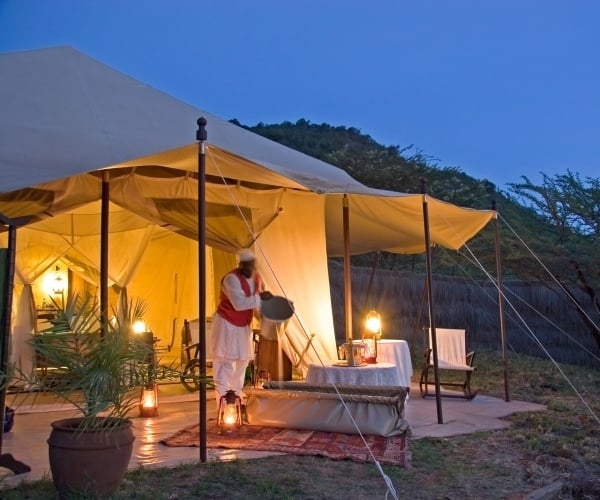Kew Gardens In London – The Best Things To Experience
Nestled in London’s embrace lies Kew Gardens, a botanical paradise bursting with vibrant blooms and captivating greenery. Here, every path promises a breathtaking encounter – a secret sculpture peeking from behind a curtain of ivy, a crystal-clear lake reflecting...
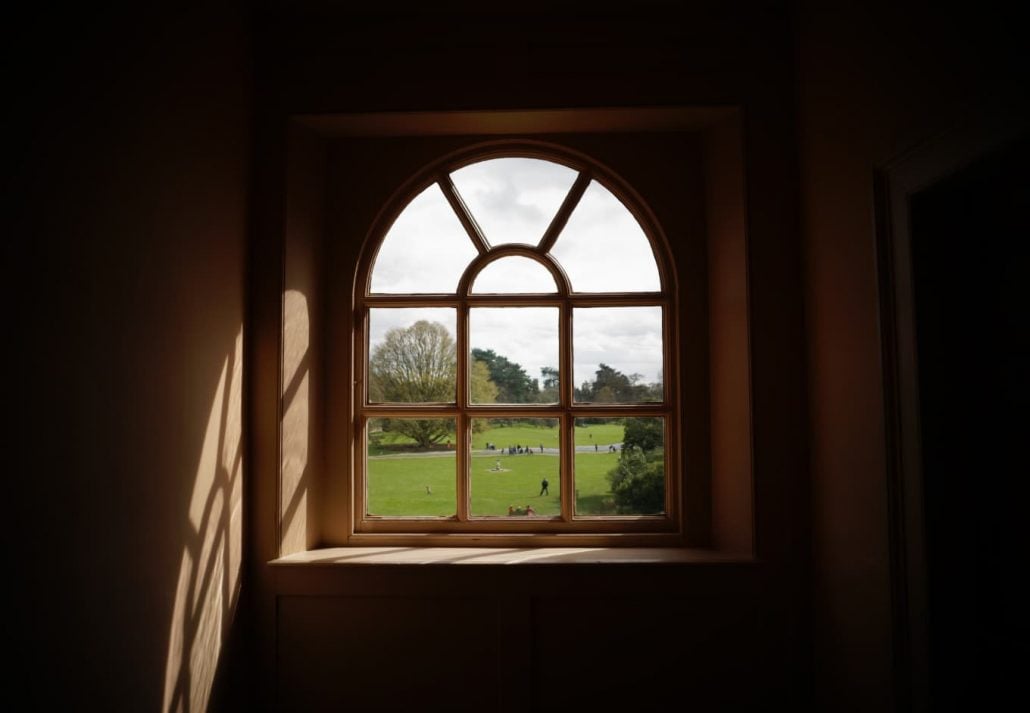
Nestled in London’s embrace lies Kew Gardens, a botanical paradise bursting with vibrant blooms and captivating greenery. Here, every path promises a breathtaking encounter – a secret sculpture peeking from behind a curtain of ivy, a crystal-clear lake reflecting a kaleidoscope of colors, or a hidden bench where time seems to melt away amidst the fragrant embrace of nature’s perfume. Kew Gardens is a love letter to the plant kingdom, a place where every corner tells a story. Let’s find out more!
In A Nutshell
| 📌 Location | Royal Botanic Gardens, Kew, Richmond, Surrey, TW9 3AE. Find on map |
| 🚗 Getting There | Take the bus route 110 with stops at Elizabeth Gate, Victoria Gate, and Lion Gate. |
| 🔥 Highlights | Pagoda, Palm House, The Hive, Kew Palace |
| 🎟️ Ticket Prices | £20 during peak season and £12 during off-season |
| ⏰ Opening Hours | Daily, 10 AM to 7 PM (last entry at 6 PM) |
| 👌 Best Time To Visit | Apr-May or Jun-Jul |
The History Behind Kew Gardens

Kew Gardens started as a private garden with exotic plants in the 1700s. Royals like Princess Augusta, the Dowager Princess of Wales, and King George III helped it grow. By the 1800s, it became a center for scientific research and famous for its glasshouses.
The 18th century saw a key turning point: Kew became a scientific powerhouse under the leadership of Sir Joseph Banks. His reign transformed Kew into a global hub for plant research and exchange. This period also saw the gardens expand through the merging of royal estates and iconic structures like the Great Pagoda popping up.
By the 1840s, Kew Gardens transitioned from a royal playground to a national treasure. The 19th century brought even more fame with the construction of the Palm House and Temperate House, architectural marvels that became the envy of conservatories worldwide.
Today, Kew Gardens stands as a giant in the botanical world. It’s a UNESCO World Heritage Site, a testament to its historical significance and its ongoing mission to conserve and understand the plant kingdom.
Top Things To Do
Kew Palace
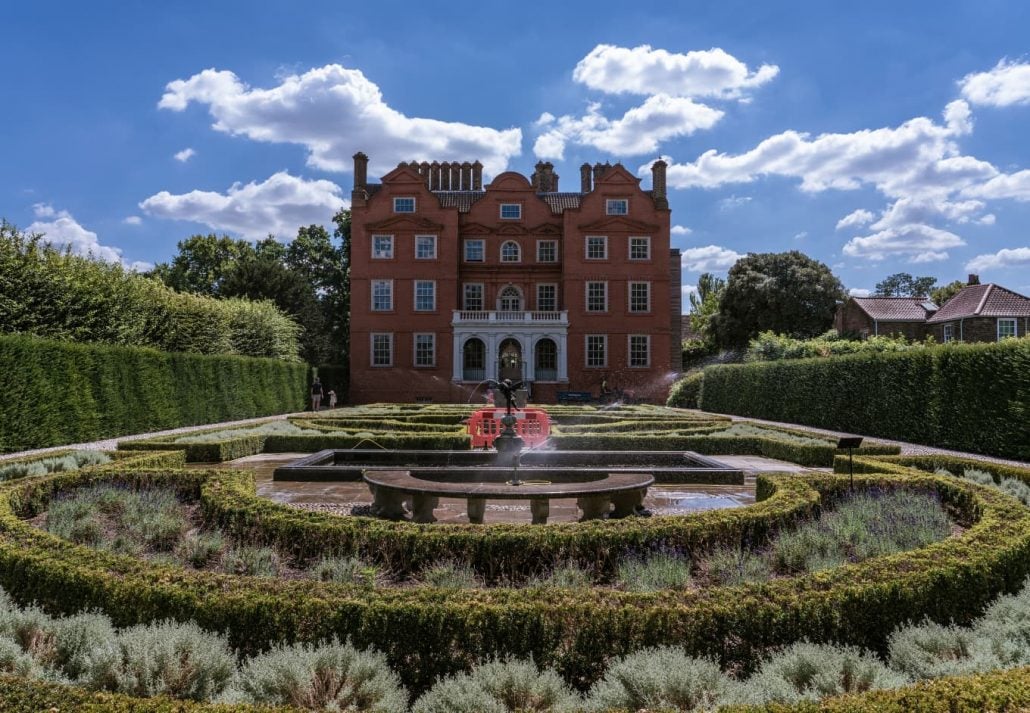
This seemingly modest Dutch house, built in 1631 for a silk merchant named Samuel Fortrey, holds the title of the smallest palace in the entire country. Remarkably, it’s one of the few remaining structures in the Kew Palace complex, alongside the former brewhouse, housekeeper’s cottage, and kitchen.
In the 1720s, George II and Queen Caroline called it home. Later, it provided a sanctuary for King George III during periods of mental illness, and Queen Charlotte even spent her final days here. Step inside and discover a tale woven from the intimate lives of these monarchs.
Pagoda
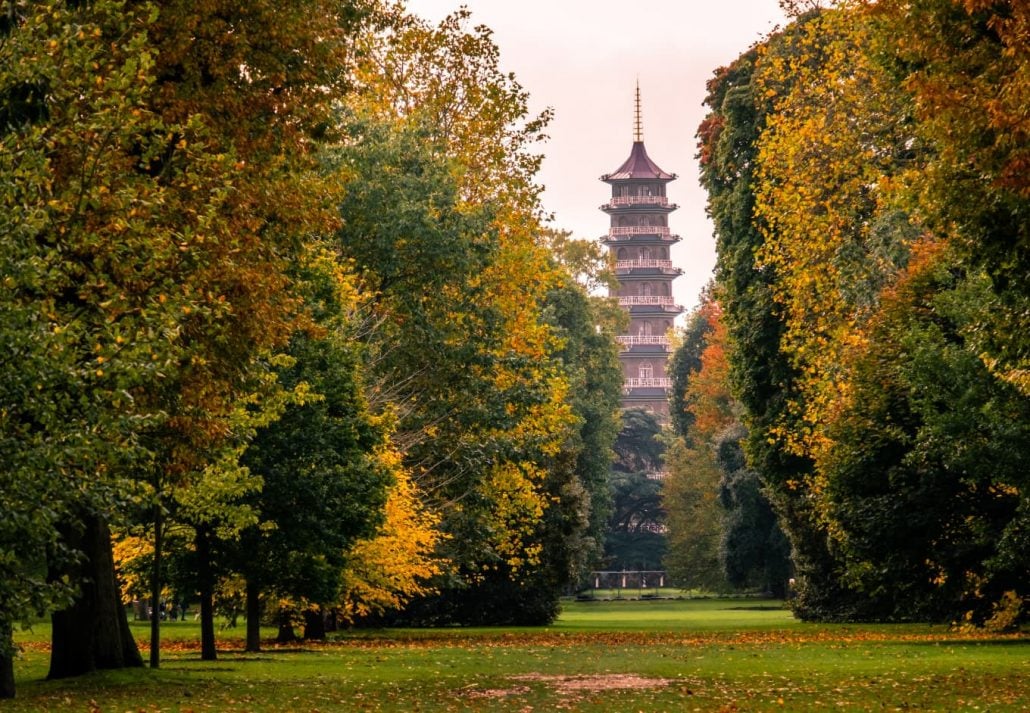
This architectural gem, a gift to Princess Augusta who had entrusted Chambers with much of the garden’s design, boasts beautiful curved roofs and intricate railings in the Chinese Chippendale style. Ascend to the Pagoda, offering one of the earliest and most captivating bird’s eye views of London, and delve into the fascinating history of this unique structure through its on-site exhibits.
Temperate Glasshouse
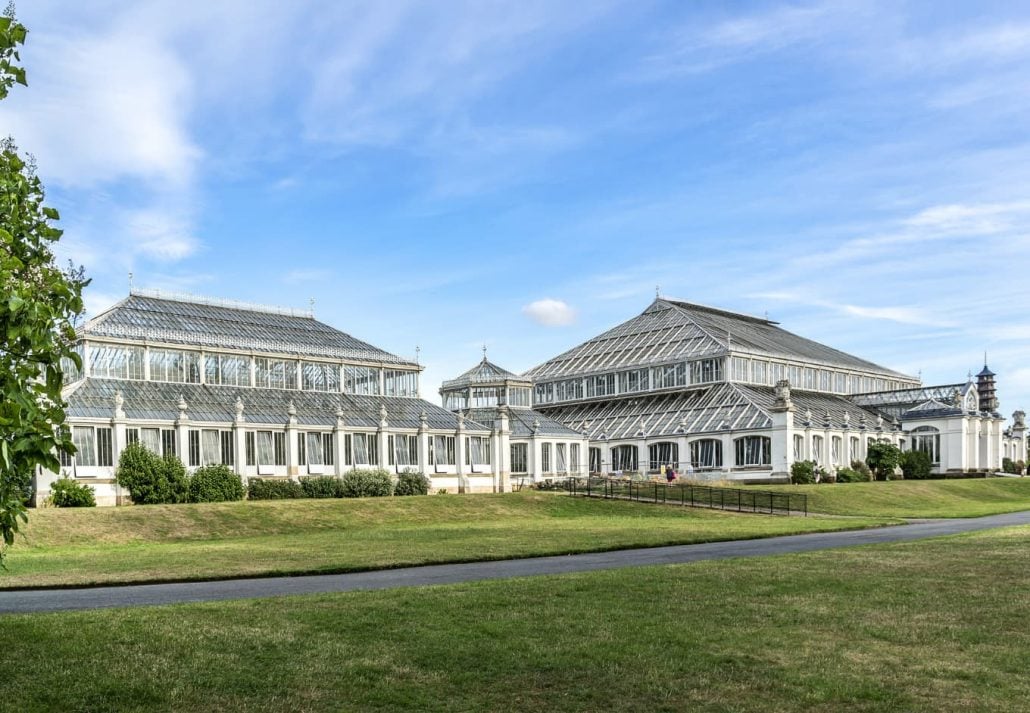
Step inside a haven for the world’s most vulnerable temperate plants. This is the world’s largest surviving Victorian glasshouse – a massive structure reaching 19 meters high and covering 4,880 square meters providing a crucial sanctuary for threatened species. Among them are a staggering 6 that are tragically extinct in the wild but clinging to survival thanks to the conservation efforts here.
Queen Charlotte’s Cottage
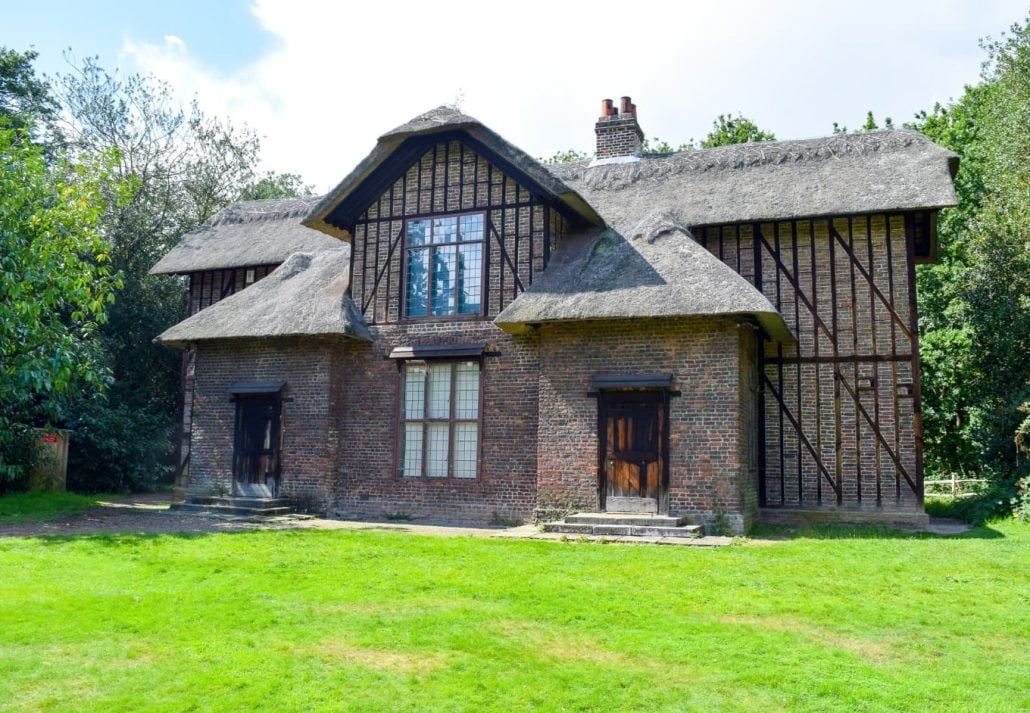
Steeped in history, the 17th-century cottage served as a charming escape for the royals. Here, they could unwind amidst the gardens, indulging in afternoon teas or delightful picnics. The neighboring paddock boasted a menagerie of fascinating creatures back in the day. It was home to the country’s first kangaroos, the now-extinct quagga, a pair of graceful black swans, and even buffaloes.
Step downstairs to the print room and admire the Queen’s personal collection of Hogarth prints. Alternatively, the tearoom offers a glimpse into Princess Elizabeth’s artistic side with her charming floral and bamboo works.
Palm House
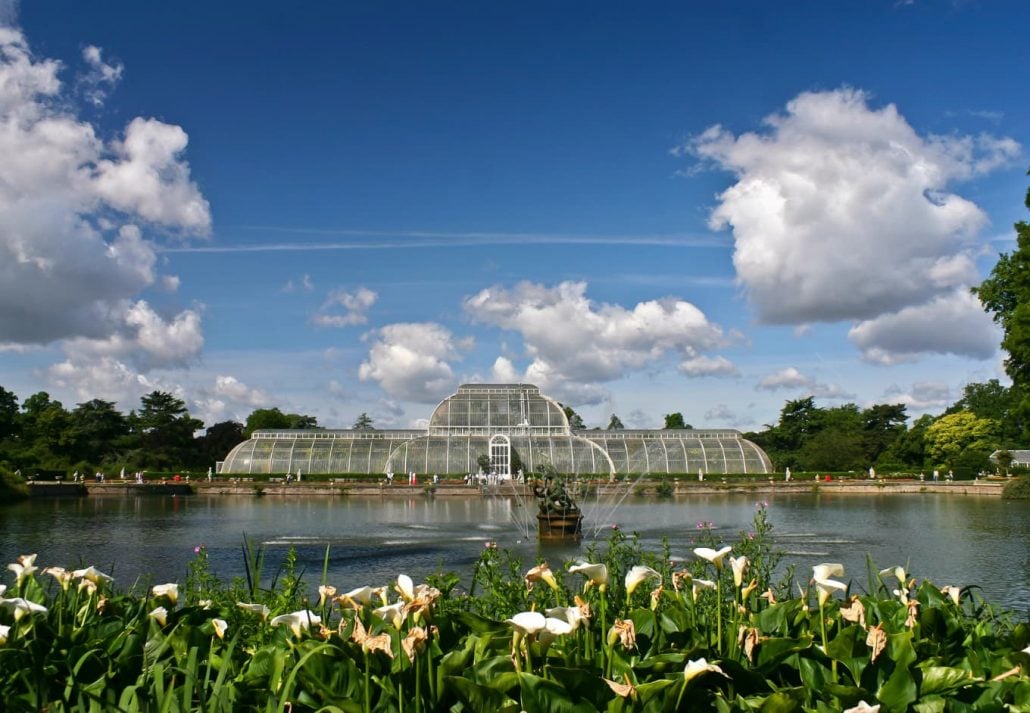
Built in the 1844s and resembling a majestic ship hull, this greenhouse fosters a humid haven for an extraordinary collection of plants. Witness both endangered and extinct treasures like the cocoa tree and African oil palm. And keep an eye out for the world’s oldest potted plant, a resident here for over 250 years!
The Hive
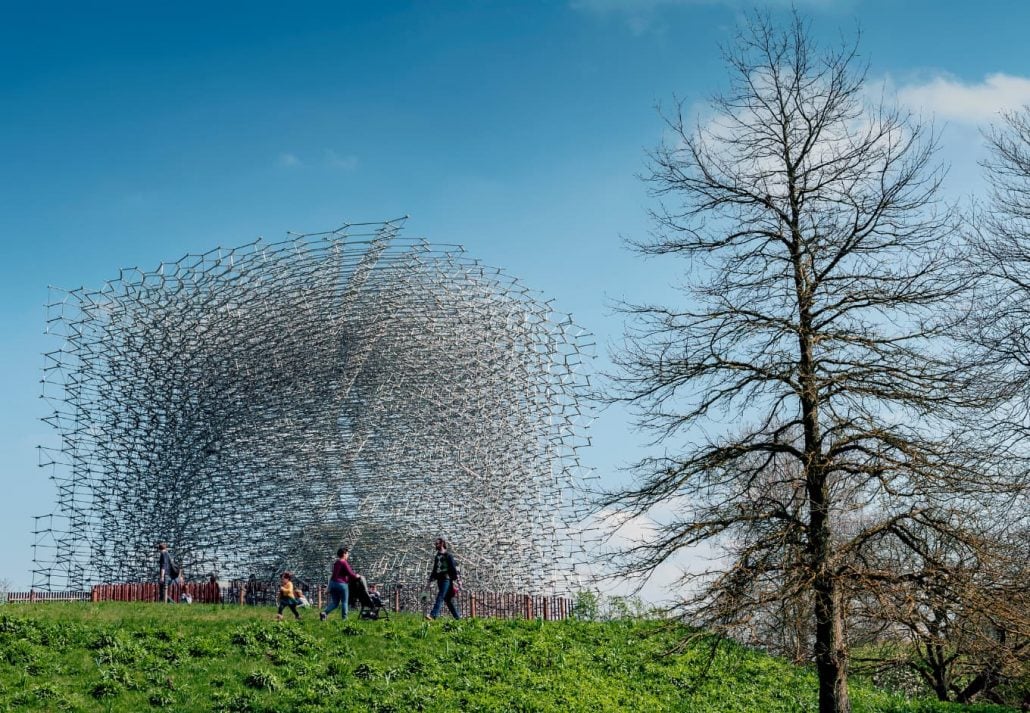
Towering 17 meters tall, this geometric installation invites you on an immersive journey into the buzzing world of bees. Imagine 1,000 LED lights flickering to life, mimicking the hive’s activity in response to bee vibrations. The structure itself, crafted from 170,000 aluminum parts, replicates the stunning visual effects of a real beehive. Surround yourself with a calming soundscape inspired by the hum of the bees. A beautiful symphony of vocals and cello, composed entirely in the key of C, fills the air.
Waterlily House
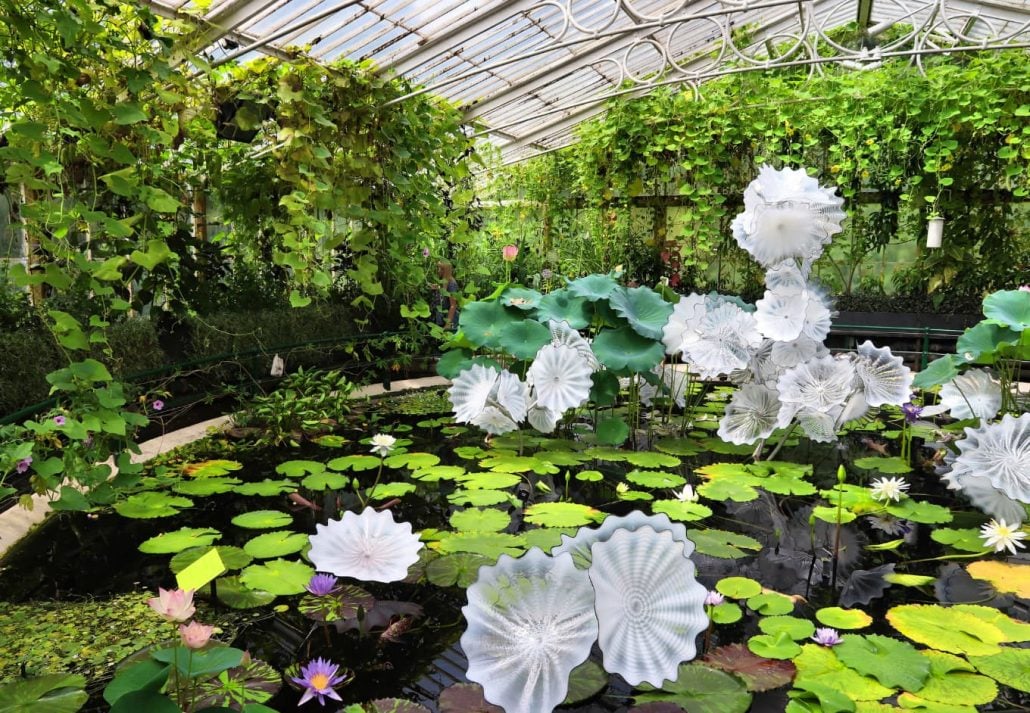
This iconic structure boasts a centerpiece pond stretching over 10 meters, specifically designed to nurture the giant Amazon waterlily (Victoria Amazonica). It shares the space with the Santa Cruz waterlily (Victoria Cruziana), famous for its enormous lily pads that can reach up to 2 meters in diameter! During the summers, the pond transforms into a vibrant display, bursting with lotus, papyrus, and a dazzling array of other aquatic plants.
Princess of Wales Conservatory
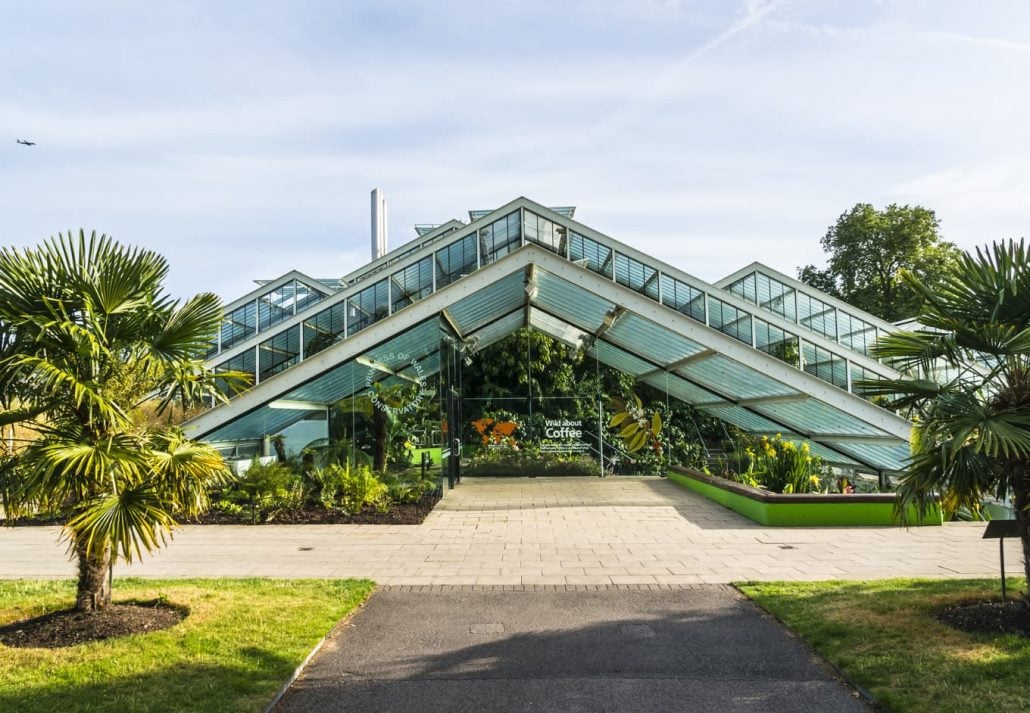
Opened in 1987 by the beloved Princess Diana, this sprawling complex whisks you on a climactic journey across 10 distinct ecosystems. Imagine computer-controlled environments meticulously recreating everything from lush tropical rainforests to arid deserts, all within a staggering 4,500 square meters. Witness the captivating diversity of plant life, from the carnivorous Venus Flytrap to the vibrant Bromeliad.
Davies Alpine House
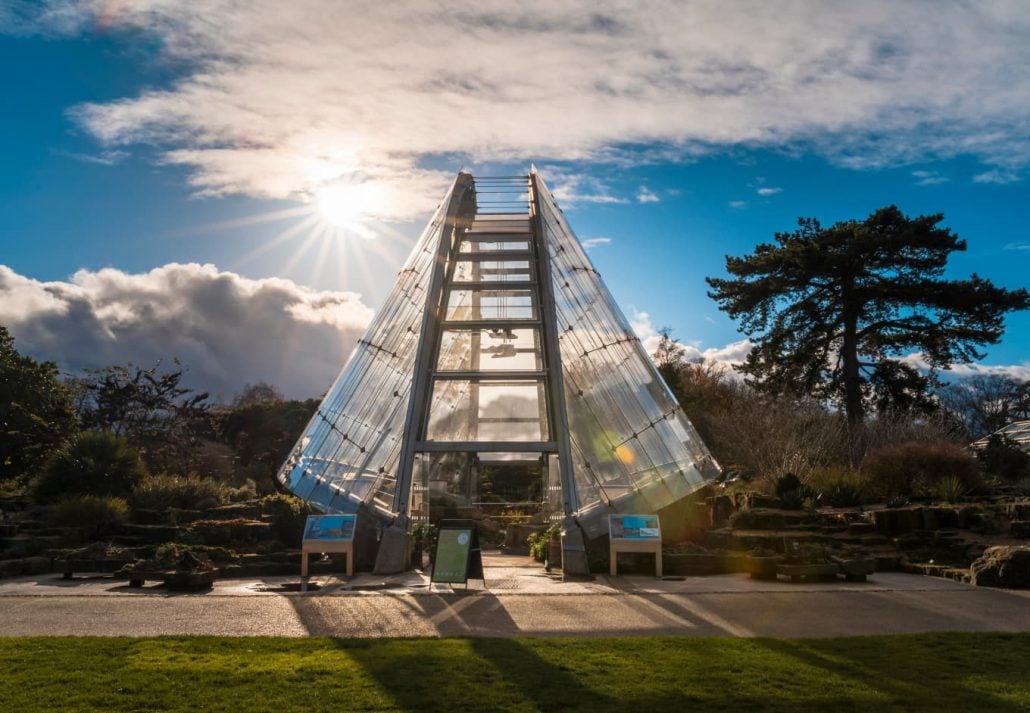
The Davies Alpine House mimics the harsh environments of high altitudes and polar regions, where these resilient plants typically thrive in extreme cold. This ingenious glasshouse utilizes a clever design: two back-to-back arches work together to naturally expel warm air, ensuring a cool and energy-efficient space. Inspired by the passive cooling systems found in termite mounds, the Davies Alpine House is a prime example of biomimicry in action!
Xstrata Treetop Walkway
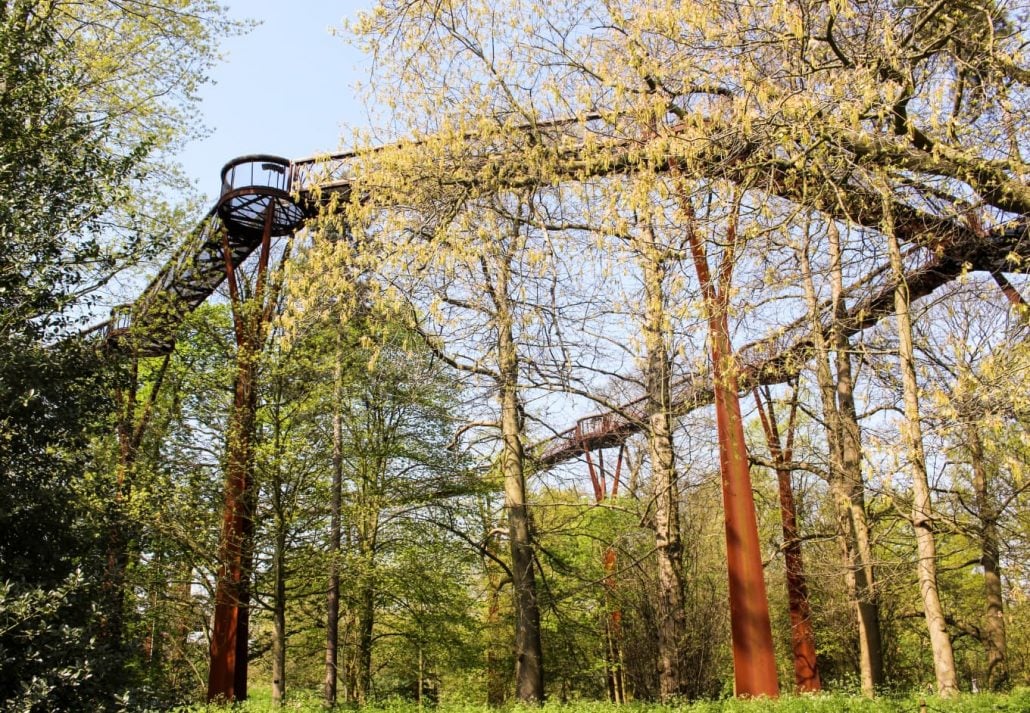
Kew Garden’s Treetop Walkway soars 18 meters above the forest floor, offering a breathtaking panorama of the canopy. Stretching an impressive 200 meters, this popular attraction isn’t just for the views – it’s designed with a gentle sway in the wind, creating an immersive experience that will set your pulse racing (in a good way).
Stay Near Kew Gardens
Near Kew Gardens, you’ll find a variety of hotels to suit different tastes and budgets. If you prioritize affordability, consider Travelodge London. For more space and a modern vibe, Aparthotel Adagio is a good choice. If you crave a classic pub feel, Coach & Horses might be ideal. For amenities like a pool, Novotel London could work. Traveling with family? The Premier Inn offers family rooms and a children’s menu. No matter your preference, there’s a hotel near Kew Gardens to make your visit comfortable.
Frequently Asked Questions
What is Kew Palace like?
Kew Palace is a historic royal residence located within the gardens. Separate tickets are required, but it offers a glimpse into British royal life.
What are the must-see attractions in Kew Gardens?
Kew Gardens is vast! Popular attractions include the Palm House, Temperate House, Princess of Wales Conservatory, Treetop Walkway, and various gardens with specific themes.
How much time do I need to see Kew Gardens?
A full day is ideal to explore all the gardens and attractions at a leisurely pace. However, you can still enjoy a good portion of the gardens in half a day.
What’s the best time of the year to visit Kew Gardens?
Spring (April-May) and autumn (June-July) offer beautiful blooms and comfortable temperatures. Summer can get crowded, but there are often special events.
What kind of research is done at Kew Gardens?
Kew is a world-renowned scientific institution that conducts research on plant diversity, conservation, and climate change.
Are there any art exhibitions at Kew Gardens?
Yes, Kew Gardens often hosts contemporary art exhibitions throughout the year, often inspired by nature and plants.

 AbJimroe
AbJimroe 








